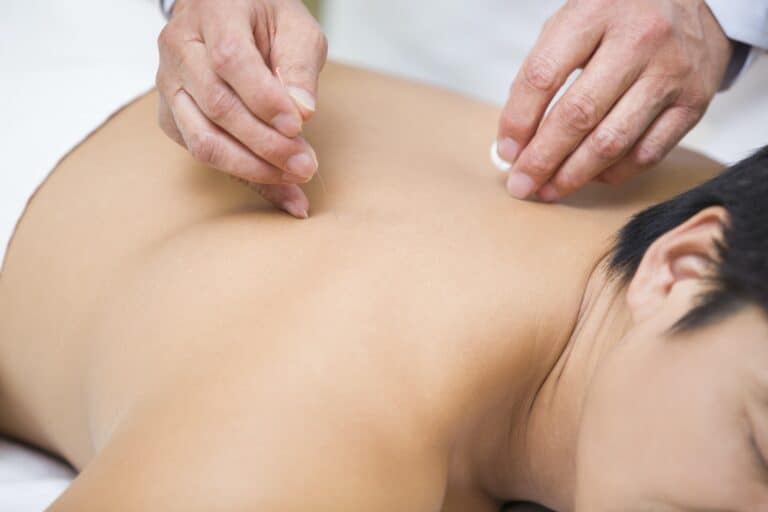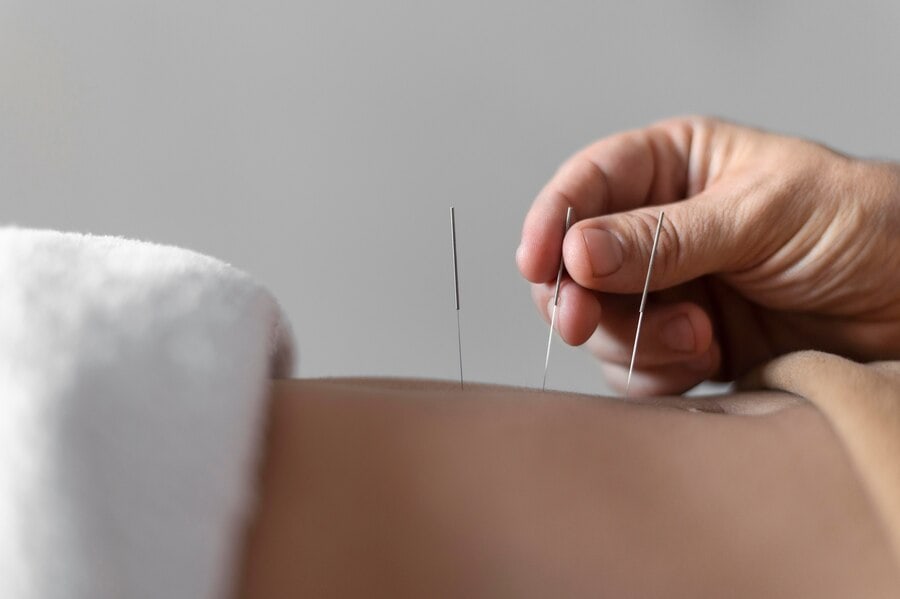The Restorative Power of Acupuncture Needles
Acupuncture is a traditional Chinese medicine that has been around for over 2000 years. It is based on balancing the flow of energy or Qi in the body. Acupuncture needles play an essential role in restoring this balance by stimulating specific points in the body. These needles are fragile and cause minimal discomfort during treatment. In this blog post, we will discuss how acupuncture works, what to expect during a session, and how it can aid in healing various ailments. We will also take a look at the science behind acupuncture and its effects on the body. Lastly, we will explore the different acupuncture points on the body and their respective functions. If you’re curious about this ancient practice and want to know how it can benefit you, keep reading!
Understanding Acupuncture
Acupuncture is a traditional Chinese medicine practice that involves the insertion of thin needles into specific points of the body. This treatment aims to restore energy flow and balance, known as chi or chee. Scientific studies have shown the benefits of acupuncture for various health conditions, ranging from back pain to digestive issues. The acupuncture needles used in these treatments are sterile, disposable, and painless, ensuring a safe and comfortable patient experience.
- The Philosophy behind Acupuncture: Acupuncture is deeply rooted in the philosophy of traditional Chinese medicine, which centers around the concept of qi, the body’s energy flow. By stimulating specific acupuncture points, practitioners aim to restore balance and harmony to the body’s qi. This holistic approach views the body as interconnected, with acupuncture pathways linking various organs, tissues, and blood vessels. It is believed that acupuncture can address not only physical imbalances but also mental and emotional well-being. Acupuncture offers a comprehensive and integrative approach to health and healing.
- Types of Acupuncture Methods: Different acupuncture methods are used for different health conditions. Traditional acupuncture uses thin metallic needles inserted at specific points on the body. Electroacupuncture applies electrical stimulation to these points. Auricular acupuncture targets ear points, while physical therapists use dry needling for chronic pain and muscle discomfort. Acupressure is a needle-free technique that applies pressure on acupuncture points.
The Role of Acupuncture Needles
Acupuncture needles are crucial in stimulating acupuncture points promoting energy flow and blood circulation. These thin, sterile, disposable needles ensure safety and hygiene during the treatment. The needle size may vary depending on the severity of the condition being treated. The insertion of acupuncture needles is typically painless, with most people experiencing slight discomfort. By targeting specific points, acupuncture needles help restore balance and facilitate the body’s natural healing processes.
- Description of Acupuncture Needles: Acupuncture needles, made of thin and flexible stainless steel, vary in length from 0.5 to 3 inches. With their smooth surface, they are designed for painless insertion into acupuncture points, minimizing tissue damage. These needles are crucial in stimulating the body’s energy flow and promoting blood circulation. They play a vital role in restoring balance and maximizing effectiveness. Their sterile and disposable nature ensures safety and hygiene during treatment. Acupuncture needles are instrumental in the therapeutic process without causing significant discomfort.
- How Needles are Used in Treatment: Acupuncturists utilize specific insertion techniques for various acupuncture points, gently inserting needles to minimize discomfort. Once inserted, the needles may be manipulated or left in place for a specific duration. Acupuncturists may also employ needle stimulation techniques like twisting or electrical stimulation. The number of acupuncture treatments needed varies depending on the individual’s condition. By employing these techniques, acupuncturists aim to restore balance and promote healing in the body.
Acupuncture Procedure
Preparing for an acupuncture session involves wearing comfortable and loose clothing. The acupuncturist conducts an initial consultation to understand the individual’s health history. Throughout the procedure, the acupuncturist explains each step of the treatment. The individual lies down on a treatment table and identifies specific acupuncture points. The acupuncturist then inserts needles into these points, often targeting the affected areas.
- Preparing for an Acupuncture Session: For a successful acupuncture session, take these steps beforehand: avoid heavy meals and excessive caffeine, wear loose and comfortable clothing, communicate health concerns and medications to the acupuncturist, arrive well-rested with an open mind, and practice relaxation techniques like deep breathing.
- What to Expect During the Procedure: Acupuncture involves using sterile needles the acupuncturist inserts. The procedure is generally painless, with only a mild sensation. Manipulation or electrical stimulation may be used on specific points. Patients often feel relaxed, calm, or energized after treatment. The acupuncturist closely monitors progress and makes adjustments as needed.
The Healing Process
After acupuncture, individuals may experience various effects, such as pain relief, improved sleep, or increased energy. Achieving desired results may require multiple treatments depending on the condition being addressed. Acupuncture stimulates the body’s natural healing mechanisms, promoting overall well-being. Staying hydrated, getting enough rest, and following any recommendations from the acupuncturist after treatment is essential. Acupuncture can be an effective complementary treatment for various health conditions.
- Post-Acupuncture Care: After your acupuncture session, following your acupuncturist’s recommendations for post-treatment care is crucial. This may include applying ice or heat to the treatment area as advised, staying hydrated, and avoiding strenuous physical activity. It’s essential to take note of any changes or improvements in your symptoms and discuss them with your acupuncturist. Additionally, maintaining a healthy lifestyle with proper nutrition and regular exercise can support the effects of acupuncture.
- Frequency of Acupuncture Treatments: The frequency of acupuncture treatments varies based on individual needs and goals. Personalized plans may involve weekly, bi-weekly, or monthly sessions. Consistency is essential for optimal results. Discuss your treatment schedule with your acupuncturist to ensure the appropriate number of treatments. Follow-up sessions may be recommended for maintenance.

The Science Behind Acupuncture
Acupuncture, a traditional Chinese medicine, promotes balance and health by stimulating specific points along meridian pathways. Scientific studies suggest it stimulates endorphin release, reduces inflammation, and affects neurotransmitter levels. It may also increase blood flow, activate natural painkillers, and modulate the spinal cord and connective tissue. The National Institutes of Health recognizes acupuncture as effective for migraines, arthritis, and chronic pain.
- How Acupuncture Needles Restore Balance: Acupuncture needles restore balance in the body by stimulating specific acupuncture points. This promotes healing, reduces pain and inflammation, and improves blood flow. The acupuncturist’s skill and precision in insertion contribute to treatment effectiveness. The needles are sterile, disposable, and safe, minimizing side effects.
- The Effect of Acupuncture on the Body: Acupuncture treatment offers pain relief, reduces stress, and promotes overall health. The body releases endorphins by stimulating specific points with needles, providing pain relief. Acupuncture also regulates the nervous system, reducing anxiety and promoting relaxation. It improves blood flow, oxygenation, and energy flow throughout the body, resulting in increased energy, enhanced well-being, and improved sleep for many individuals.
The Points On The Body Where Acupuncture Is Done
Acupuncture therapy stimulates specific points on the body called acupuncture points. These points are located along energy pathways called meridians. Inserting needles into these points stimulates energy flow, promoting balance and harmony in the body. Each point has a unique purpose and function, used for different conditions. Acupuncture restores the body’s natural healing abilities.
- Acupuncture points and their functions: Acupuncture points, found along the body’s meridians or energy channels, serve specific functions in addressing various health conditions. For instance, the stomach meridian features points that aid digestion and alleviate nausea, while the bladder meridian points target back pain and urinary problems. Acupuncturists leverage their understanding of these points to develop personalized treatment plans for patients. By activating these designated points, practitioners can restore balance and promote overall well-being.
- The effects of acupuncture on the body: Acupuncture stimulates specific points, promoting natural healing processes. This ancient practice has been proven to reduce stress, alleviate pain, and enhance overall well-being. By targeting meridians and energy pathways, acupuncture helps restore balance in the body, improving circulation and reducing inflammation. It also enhances organ function and promotes mental clarity. With its safe and effective approach, acupuncture is a viable alternative to conventional Western medicine for various health conditions.
- The purpose of acupuncture is to restore balance in the body: Acupuncture aims to restore balance by inserting fine needles into specific points. These needles stimulate energy flow and promote the body’s natural healing process. With its holistic approach, acupuncture can address various physical and mental health concerns, including pain management, anxiety, and depression. Each treatment is personalized, targeting acupuncture points tailored to the individual’s unique needs. As a safe and effective alternative or complementary treatment, acupuncture offers a natural way to restore balance and enhance overall well-being.
Acupuncture needles play a crucial role in restoring balance to the body. By stimulating specific points in the body, these needles initiate a cascade of physiological responses that promote healing and overall well-being. The ancient philosophy behind acupuncture believes that energy, or qi, flows through meridians in the body. When this energy is blocked or imbalanced, it can lead to various health issues. Acupuncture needles help restore the flow of qi, releasing blockages and allowing the body to regain its natural balance. The effects of acupuncture can be felt on both the physical and emotional levels, addressing various conditions. Contact us or visit our website today; if you’re considering acupuncture as a treatment option, it’s essential to consult with a qualified practitioner and discuss your specific needs and goals.




